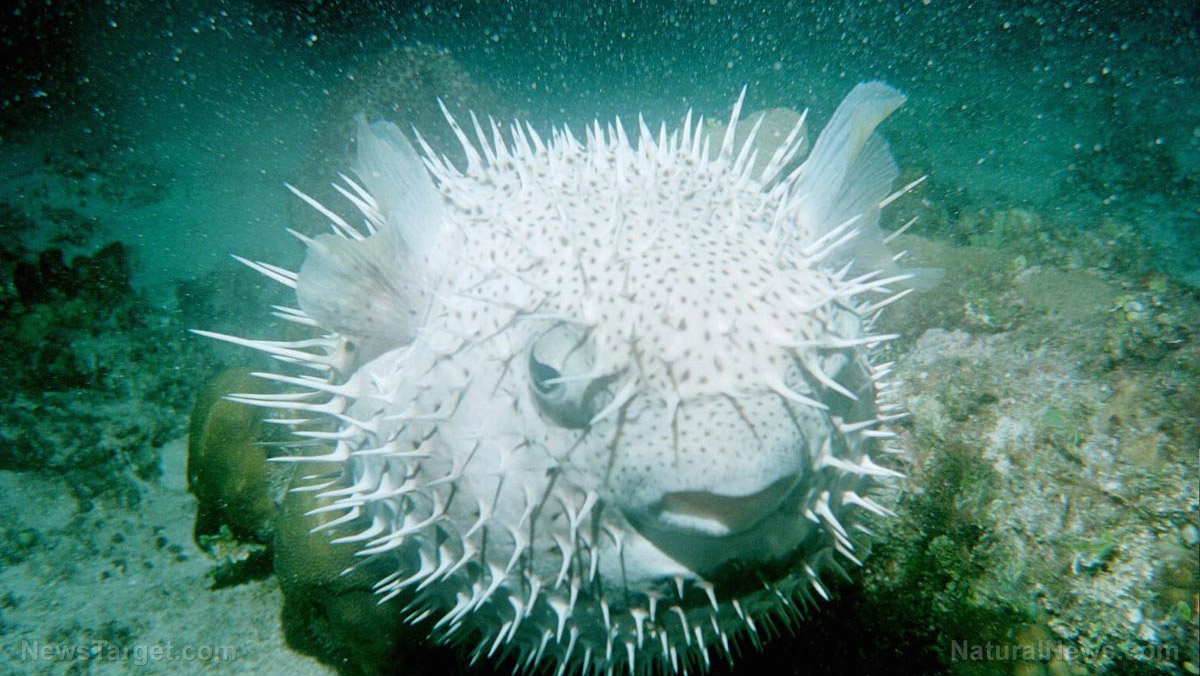
Also known as blowfish, porcupinefish are medium- to large-sized tropical fish that belong to the Diodontidae family. Found in shallow temperate and tropical seas throughout the world, porcupinefish are known for their ability to inflate their bodies – a trait also exhibited by their cousins, the pufferfish.
Aside from their body-inflating ability, however, porcupinefish are perhaps more known for their distinctive features: the spines from which they get their name.
It is these spines that have inspired experts from Japan's National Institute for Materials Science (NIMS) to pursue research regarding superhydrophobic materials.
As detailed in the American Chemical Society's journal ACS Applied Materials & Interfaces, this is because the majority of the superhydrophobic materials currently in production employ a coating of tiny needle-like structures that stick out vertically from their surface. These structures, experts said, keep water droplets from making their way down to that surface by holding them up above a layer of air, thus allowing them to just roll off.
Unfortunately, these micro-needles are rigid and fragile, and often break off when the material is bent or twisted, or when it gets scraped across hard surfaces. This is in stark contrast to porcupinefish spines which, despite not being superhydrophobic, are inherently pliable, which means that they are not as easily damaged even when subjected to the same stresses as conventional superhydrophobic materials. (Related: Seashell-inspired shatterproof glass: Researchers engineer strong composite glass based on mother of pearl that can resist impact.)
As described in the study, researchers Yoshihiro Yamauchi, Masanobu Naito and their colleagues from NIMS attempted to replicate this property by making scaled-down copies of porcupinefish spines, which they created out of zinc oxide, and a silicone polymer.
These two materials ensured that the resulting product had two contrasting mechanical properties: the zinc oxide was proved integral in the creation of hard, tetrapod-shaped micrometer-scale spines, while the silicone polymer helped form a highly flexible “skin.”
This flexibility, coupled with the density of the spines’ distribution throughout the material’s entire structure, meant that the final product is capable of continuously maintaining its water repellency, even after being repeatedly bent and deformed by external forces, and even after bits of it have been sliced off.
According to the researchers, the product – which they described as being “superior” to conventional water-repellent materials – has a wide range of practical uses, noting that it can be molded into various shapes to create objects that are hydrophobic all the way through, or coated onto other surfaces. In addition, the composite structure may even be used to help extend the durability of various other structural materials, noting that its flexible and porous nature may also be used to cushion other objects against mechanical impacts and deformation.
Aside from porcupinefish spines, other organic materials are being looked to as inspirations for new superhydrophobic textiles and industrial products. These include items such as rose petals, lotus leaves, the undersides of Salvinia ferns, and the bodies of springtails and fire ants.
More research, however, is needed in order to fully harness these materials’ properties on a much larger scale.
Sources include:
Please contact us for more information.























